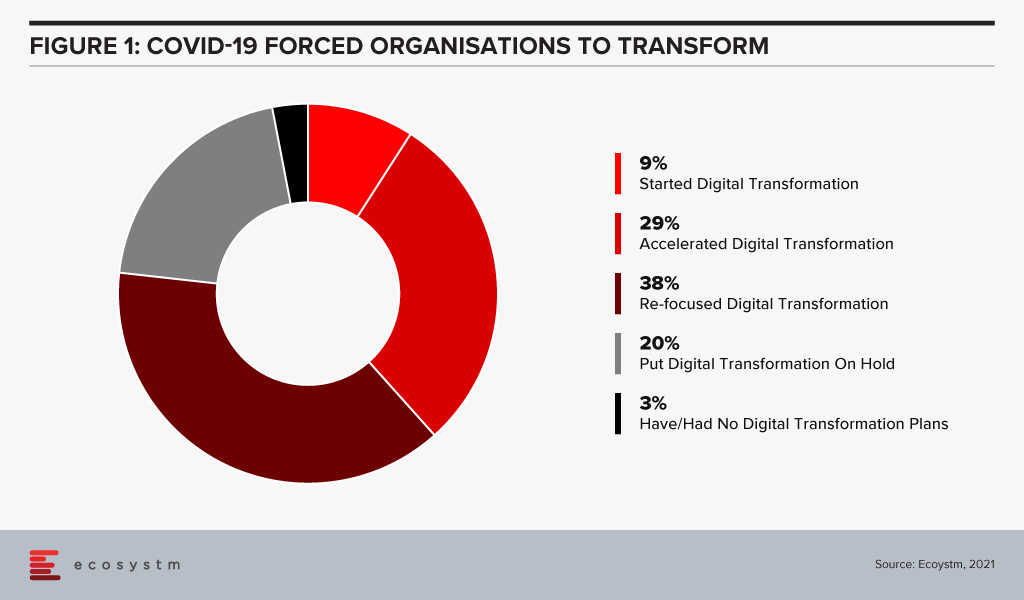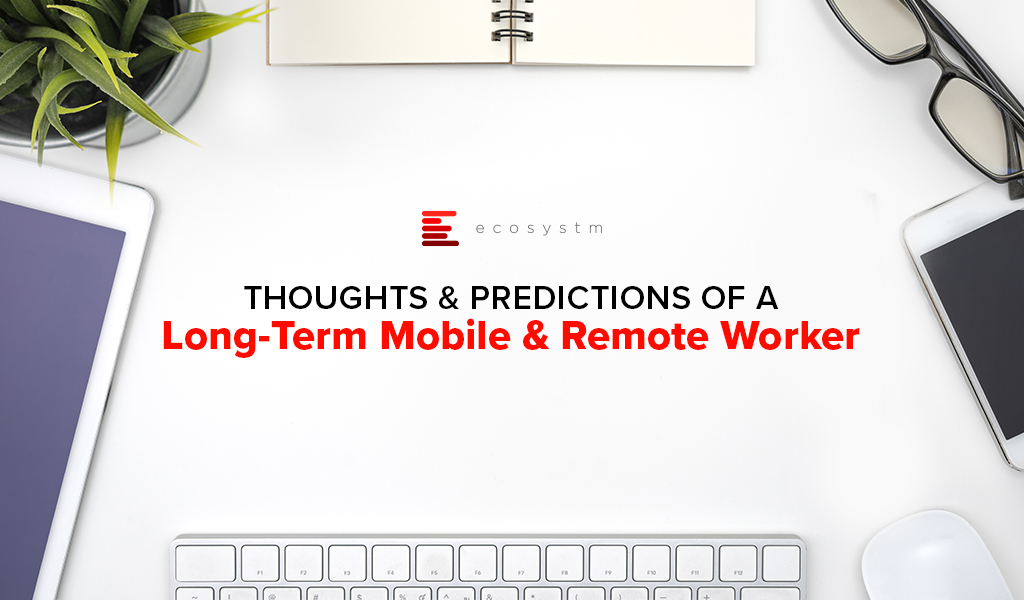2024 and 2025 are looking good for IT services providers – particularly in Asia Pacific. All types of providers – from IT consultants to managed services VARs and systems integrators – will benefit from a few converging events.
However, amidst increasing demand, service providers are also challenged with cost control measures imposed in organisations – and this is heightened by the challenge of finding and retaining their best people as competition for skills intensifies. Providers that service mid-market clients might find it hard to compete and grow without significant process automation to compensate for the higher employee costs.
Why Organisations are Opting for IT Service
- Organisations are seeking further cost reductions. Managed services providers will see more opportunities to take cost and complexity out of organisation’s IT functions. The focus in 2024 will be less on “managing” services and more on “transforming” them using ML, AI, and automation to reduce cost and improve value.
- Big app upgrades are back on the agenda. SAP is going above and beyond to incentivise their customers and partners to migrate their on-premises and hyperscale hosted instances to true cloud ERP. Initiatives such as Rise with SAP have been further expanded and improved to accelerate the transition. Salesforce customers are also looking to streamline their deployments while also taking advantage of the new AI and data capabilities. But many of these projects will still be complex and time-consuming.
- Cloud deployments are getting more complex. For many organisations, the simple cloud migrations are done. This is the stage of replatforming, retiring, and refactoring applications to take advantage of public and hybrid cloud capabilities. These are not simple lift and shift – or switch to SaaS – engagements.
- AI will drive a greater need for process improvement and transformation. This will happen along with associated change management and training programs. While it is still early days for GenAI, before the end of 2024, many organisations will move beyond experimentation to department or enterprise wide GenAI initiatives.
- Increasing cybersecurity and data governance demands will prolong the security skill shortage. More organisations will turn to managed security services providers and cybersecurity consultants to help them develop their strategy and response to the rising threat levels.
Choosing the Right Cost Model for IT Services
Buyers of IT services must implement strict cost-control measures and consider various approaches to align costs with business and customer outcomes, including different cost models:
Fixed-Price Contracts. These contracts set a firm price for the entire project or specific deliverables. Ideal when project scope is clear, they offer budget certainty upfront but demand detailed specifications, potentially leading to higher initial quotes due to the provider assuming more risk.
Time and Materials (T&M) Contracts with Caps. Payment is based on actual time and materials used, with negotiated caps to prevent budget overruns. Combining flexibility with cost predictability, this model offers some control over total expenses.
Performance-Based Pricing. Fees are tied to service provider performance, incentivising achievement of specific KPIs or milestones. This aligns provider interests with client goals, potentially resulting in cost savings and improved service quality.
Retainer Agreements with Scope Limits. Recurring fees are paid for ongoing services, with defined limits on work scope or hours within a given period. This arrangement ensures resource availability while containing expenses, particularly suitable for ongoing support services.
Other Strategies for Cost Efficiency and Effective Management
Technology leaders should also consider implementing some of the following strategies:
Phased Payments. Structuring payments in phases, tied to the completion of project milestones, helps manage cash flow and provides a financial incentive for the service provider to meet deadlines and deliverables. It also allows for regular financial reviews and adjustments if the project scope changes.
Cost Transparency and Itemisation. Detailed billing that itemises the costs of labour, materials, and other expenses provides transparency to verify charges, track spending against the budget, and identify areas for potential savings.
Volume Discounts and Negotiated Rates. Negotiating volume discounts or preferential rates for long-term or large-scale engagements, makes providers to offer reduced rates for a commitment to a certain volume of work or an extended contract duration.
Utilisation of Shared Services or Cloud Solutions. Opting for shared or cloud-based solutions where feasible, offers economies of scale and reduces the need for expensive, dedicated infrastructure and resources.
Regular Review and Adjustment. Conducting regular reviews of the services and expenses with the provider to ensure alignment with the budget and objectives, prepares organisations to adjust the scope, renegotiate terms, or implement cost-saving measures as needed.
Exit Strategy. Planning an exit strategy that include provisions for contract termination, transition services, protects an organisation in case the partnership needs to be dissolved.
Conclusion
Many businesses swing between insourcing and outsourcing technology capabilities – with the recent trend moving towards insourcing development and outsourcing infrastructure to the public cloud. But 2024 will see demand for all types of IT services across nearly every geography and industry. Tech services providers can bring significant value to your business – but improved management, monitoring, and governance will ensure that this value is delivered at a fair cost.

Fundamentally, any change has to be about people. And the Digital Value Journey that we are introducing in the upcoming CXO Digital Leaders Dialogue Series is no different.
The journey covers five stages of development involving five capabilities. Still, without the engagement of the people who will be affected by the change, you will not make progress.
And the situation gets even more complicated when external events impact your business. Ecosystm research unearths the impact of COVID-19: over 90% of respondents changed their planned Digital Transformation in some way (Figure 1). These changes will inevitably mean that the anticipated behaviour changes from their teams no longer apply. Getting the affected people re-engaged with the new initiatives will not be a simple task.

For example, when an organisation I worked at integrated an information-as-a-service capability, we found that our most experienced people did not use the new capability! They preferred to stick with their paper sources as they were very good at finding what they needed.
So nothing is achieved unless someone acts differently. We can change the technology, and we can change the process, but unless the people who need to change do change, we will waste everything else we do.
The scale of the change really doesn’t matter. If people are not in a mindset where they are looking to improve, we waste our time.
In the example I mentioned earlier, our store teams used catalogues to look up parts and equipment for customers. Our most experienced people were amazing – they knew which of the myriad of catalogues was going to give them the best part. We had not convinced them that the real-time system, which the supplier updated constantly, was better for them than the last paper version they had received.
So, on the Digital Value Journey, travellers need to remain very aware of the state of mind of the people whose behaviour they expect to change. Getting and keeping these people engaged is essential to the change.
People’s Resistance to Change
But why do people resist (or just plain ignore) change? How clear are you on what is in it for them?
Recent research on people’s motivation by psychologists such as Daniel Kahneman highlights that people fear loss much more than they look forward to success. To overcome this loss aversion, we need to help people understand why their lives will be better once we’ve completed the change and specifically address their concerns.
When we were looking at replacing the paper catalogues, we told the store teams that they would be able to quickly and easily search across all the catalogues available to them to give the customer the best deal. We didn’t consider that the ability to find the right part was a source of pride for some of the team. It was a skill that our experienced team members had developed over the years, and they felt we were devaluing their expertise.
We need to help those affected by the change recognise the purpose of the change and what is in it for them. If there is nothing, then why change?
And leaving people behind on the change journey is never going to lead to success. Their clear understanding of the purpose of the change is essential to getting the anticipated benefits.
I’ve seen change activities launch with a hiss and a roar, but as the pressure comes on during the delivery stages, communication and collaboration drop away. Listening carefully and responding authentically is a necessary part of the journey right through implementation until our teams have fully adopted the changes. A change doesn’t end at the implementation of a capability.
And that catalogue replacement? The delivery team kept listening to the store teams and made some great changes that were asked for. Some of the changes we didn’t understand, but the store teams were adamant. And the development paid for itself in less than six months through increased and better quality sales.
How do digital leaders shift from providing a cost-focused to a value-focused service? At the CXO Digital Leaders Dialogue series, together with Best Case Scenario, we will be in discussion with leaders who will share their experiences on navigating their digital journey.
To learn more, or to register to attend, visit here

COVID has delivered to many companies around the world a knock-out punch which has put them on the mat. They aren’t knocked out; just dazed, as any experienced fighter would be when caught off guard with a hard blow.
One way companies have dealt with the hard blow is in their Work Environment. At the beginning of the pandemic, many businesses simply sent office workers home. Some had corporate guidance and IT support; others simply were told to “make it work”. Post COVID, there will be a New Natural State of Equilibrium in the Work Environment and the business world. In this blog, I will talk more about the Work Environment.
First let me explain my interest in the subject. I have been a full-time mobile and part-time remote worker for over 13 years with a global technology company. I have designed many mobile office environments throughout Asia, working with business units to understand their needs and to educate them on the changes required and the change management process. For over 10 years I have taught this subject around the world to fellow professionals – across industries – in Asia, Australia/New Zealand, Europe and the USA. I was based in Hong Kong during the 2003 SARS outbreak. These experiences have given me a keen understanding and perspective on what happened in the early days of COVID-19, and insights on what the future could look like for many businesses.
Let’s look at some basic Work Environment facts:
- It costs a company an average of over US$10,000/year per employee for their physical space.
- Remote working happened very quickly at the start of COVID-19, almost overnight for some companies and employees.
- There are many venues available to conduct work from, over the long term: Office, Home, the 3rd Space (coffee shops, etc) and other venues.
I recently read the Harvard Business School (HBS) working paper titled, What Jobs are Being Done at Home During the COVID-19 Crisis? Evidence from Firm Level Surveys. Key findings from the report include:
- While overall levels of remote work are high, there is considerable variation across industries.
- Remote work is much more common in industries with better educated and better paid workers.
- Employers think that there has been less productivity loss from remote working in better educated and higher paid industries.
- More than one-third of firms that had employees switch to remote work believe that it will remain more common at their company even after the COVID crisis ends.
The Emergence of the Future of Work
Mobile & Remote Work. The cost of housing a worker in an office environment has always been a concern for senior management. The cost quickly adds up, even for a small or medium-sized firm. The physical cost of the office is typically the second largest expense for a company, after employees’ salaries. This is one reason that “densification” has occurred in the office environment over the past 10 years or so. It is also a reason remote working (working outside the office – from home, coffee shop, hotel, airport lounge, etc.) has been attractive to companies. If the office environment is designed with multiple work-type spaces (e.g. collaborative, non-collaborative, quiet, etc.), a permanently designated workspace is not required for a worker. This type of Work Environment is known as a mobile environment. Both of these Work Environments – remote and mobile – have been the trend for many companies (especially technology and financial firms).
Co-working. Beginning a few years ago, another Work Environment emerged: Co-working. One of the early market leaders was WeWork. Co-working is very similar to the mobile environment. It has the added benefit of not requiring any capital cost for the fit-out (tenant improvements). The company or individual rents a desk or space in a co-working environment and just pays the monthly fee. There is no delay to find the space, sign the lease, design, or construct the space, and no capital required for the construction cost. It is a “plug and play” space.
Blended Model. Given the selection, worker typology, and flexibility of space, all these alternatives will be used in some capacity in the Future of Work (FoW). The Work Environment will be a blend of these environments. Some have predicted the death of the office building. Ecosystm research finds that only 16% of organisations are looking to reduce their commercial office space, going into 2021. People are social creatures and need interaction with others, either for effective work collaboration or just to socialise.
The Future of the Work Environment
Figure 1 shows a compilation of the various type of Work Environments which office workers use and how they came about.

Each company, especially post-COVID, will have to look at their business strategy and determine how they will best solution their Work Environment to get the maximum benefits. These are the main questions each company has to ask and answer at a strategic level:
- What is the best workspace solution for my company and employees?
- Do employees want the corporate leased space? Does it help make them more productive?
- How is the marketplace (landlords) responding to this demand if a company is leasing space?
Role-dependent Remote Workers. Returning to the larger topic of the Work Environment, the HBS paper states there are different rates of remoteness across industries. I would assert that in addition there are different rates of remoteness among the types of workers. A salesperson needs to interact differently with fellow company employees compared to an accountant or an administrative person. Workers in the Banking industry interact differently compared to workers in the Technology industry. The article also points out that a better educated and better paid worker – or a knowledge worker – can more easily be a remote worker. For those of us who have been working in the mobile/remote Work Environment for many years, we know and understand this. Knowledge workers are not employed for their physical skills. For example, an assembly line worker in an auto factory cannot be remote.
Determining Work Typology. The paper also states that remote working will be more common in the companies that have not experienced a dramatic decrease in productivity from remote working. This has been asserted and demonstrated by us, the professionals in the corporate Real Estate industry. The industry has been experiencing increased productivity for many years. We have also conducted in-house studies of the various business groups that have experienced remote working. We have even gone so far as to provide work typologies for the various types of workers. Each typology uses the office Work Environment differently and has varying levels of remote abilities.
Need for Change Management. A critical component of remote work effectiveness is the mindset shift by both the employee and the manager. The managers have to modify their style to more of a “management by performance”, versus just walking around and checking whether people are busy. Similarly, employees have to understand they are being trusted to work unsupervised but will have to accomplish the required work and be held responsible. The manager and employee relationship will require new performance measures to hold people accountable and determine whether they are being effective and productive in their remote environment. All of this requires a change management program to educate both without compromising the corporate culture.
When the pendulum finally comes to rest in the near future at what will be the New Normal, the Work Environment will be modified. But, more importantly, the mindset of employees and managers will have to be adjusted. This new mindset will be required so each company can be more agile to meet the new challenges that will be awaiting every company and industry throughout the world. This will enable a company to not only survive but thrive in the next wave of quantum shifts. And yes, there will be another wave of quantum shifts in the future, lest we forget the examples of the past (eg. the 2007 Global Financial Crisis, 2003 SARS, etc.).
This article has focused on the Work Environment. The Work Environment is one of the four components of the 360o Future of Work practice at Ecosystm. The other three components are: People, Technology, and Business. All four are required to be in balance to enable companies to meet future challenges, competitors, and unknown black swans.





